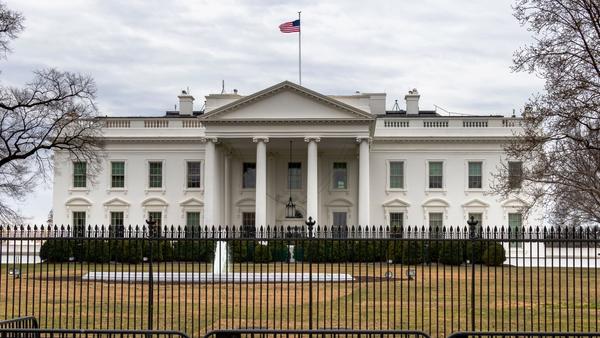Trump’s Cuts to Federal Workers Are Reshaping Washington
Uncle Sam wants you….to leave
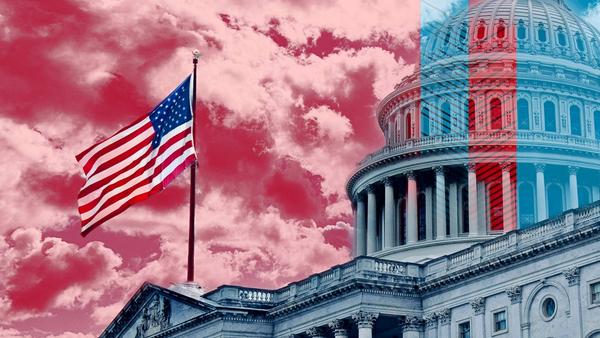
The Trump administration is overhauling the federal government, leading to steep workforce declines across many federal entities. The Consumer Financial Protection Bureau (CFPB) has experienced the largest outflows, consistent with the administration’s long-standing efforts to weaken the agency. Other hard-hit entities include the Federal Transit Administration and the US Department of Agriculture.
A notable share of former federal employees who have exited the federal government in the past six months have moved into academia, while others have shifted to roles in state and local government. Self-employment has also emerged as a popular path, with many becoming independent consultants or launching their own businesses.
These recent departures from the federal government tend to be younger, shorter-tenured workers, who were largely concentrated in legal and policy roles.
The federal government workforce has faced unprecedented upheaval since the Trump administration assumed office in January 2025. Long considered one of the most stable career paths in the US, federal jobs have suddenly become tenuous. In a bid to significantly downsize the size of the federal government, the Trump administration has eliminated thousands of positions. The exact toll is unclear, with many probationary employees fired and then re-hired, thousands of others pressured into “deferred resignation,” and many more seeing their agencies shuttered or rolled into other parts of the government. The administration has also moved to end collective bargaining rights for over one million unionized federal workers and rescinded minimum wage protections for many contract workers. Although a May 2025 court order initially halted the administration’s planned layoffs, the Supreme Court has recently permitted the administration to proceed during ongoing litigation.
These changes have undoubtedly helped to erode the appeal of federal employment that stemmed from its stability and generous benefits, leading many workers to leave for roles outside the federal government. This week, we use Revelio Labs’ workforce data to track federal government employees who have been pushed out or jumped ship since the start of Trump’s second term.
Between February and June 2025, many federal entities experienced sharp declines in headcounts, with the Consumer Financial Protection Bureau (CFPB) experiencing the largest outflows. This is unsurprising, given Trump’s long-standing opposition to the agency. He has argued that the CFPB is unconstitutional, and his legal counsel backed the 2020 Supreme Court ruling that gave presidents the authority to remove its director at will. Weakening the CFPB is in line with Trump’s broader deregulation agenda. Other entities that saw notable workforce declines include the Federal Transit Administration (FTA), which endured repeated budget threats during Trump’s first term; and the US Department of Agriculture (USDA), which has seen budget cuts to key programs like the food stamps program.

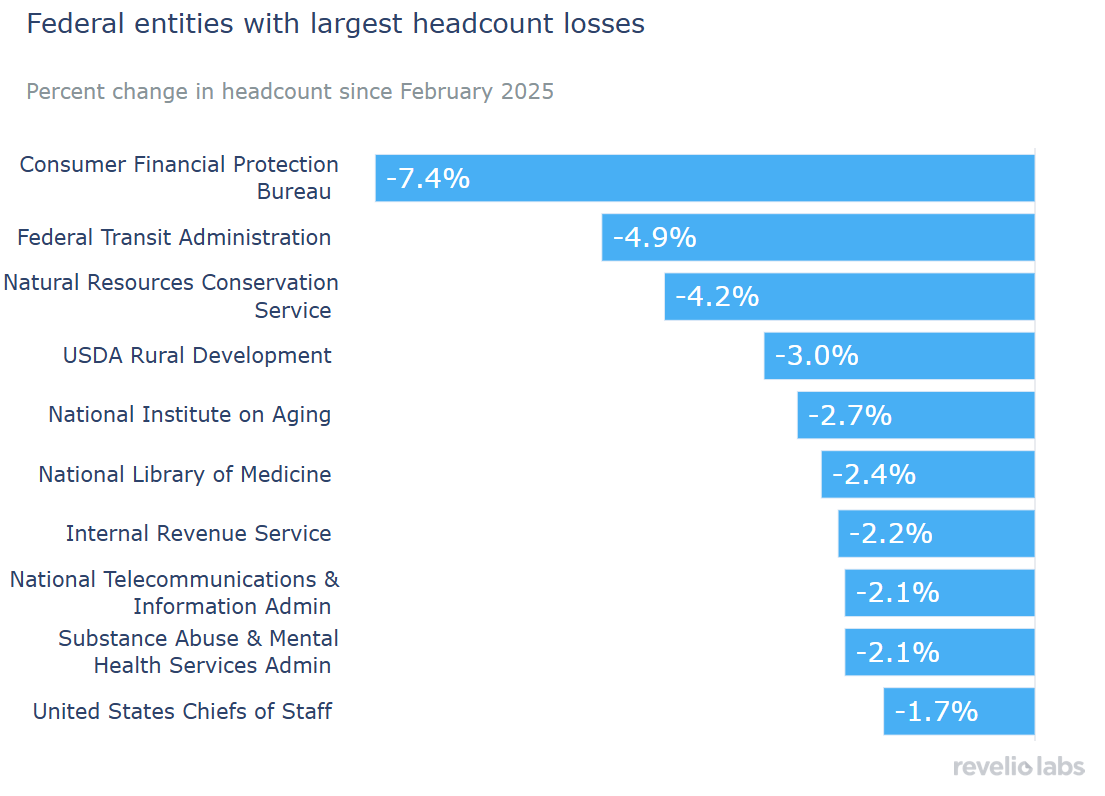
As federal jobs become less available and otherwise lose their appeal, many former employees are seeking opportunities elsewhere. Revelio Labs’ granular workforce data shows that a notable share transitioned into academia, taking faculty positions at universities. Others remained in public service but shifted to roles in state and local governments. A significant share of ex-federal workers moved into self-employment, working as independent consultants or starting their own businesses.

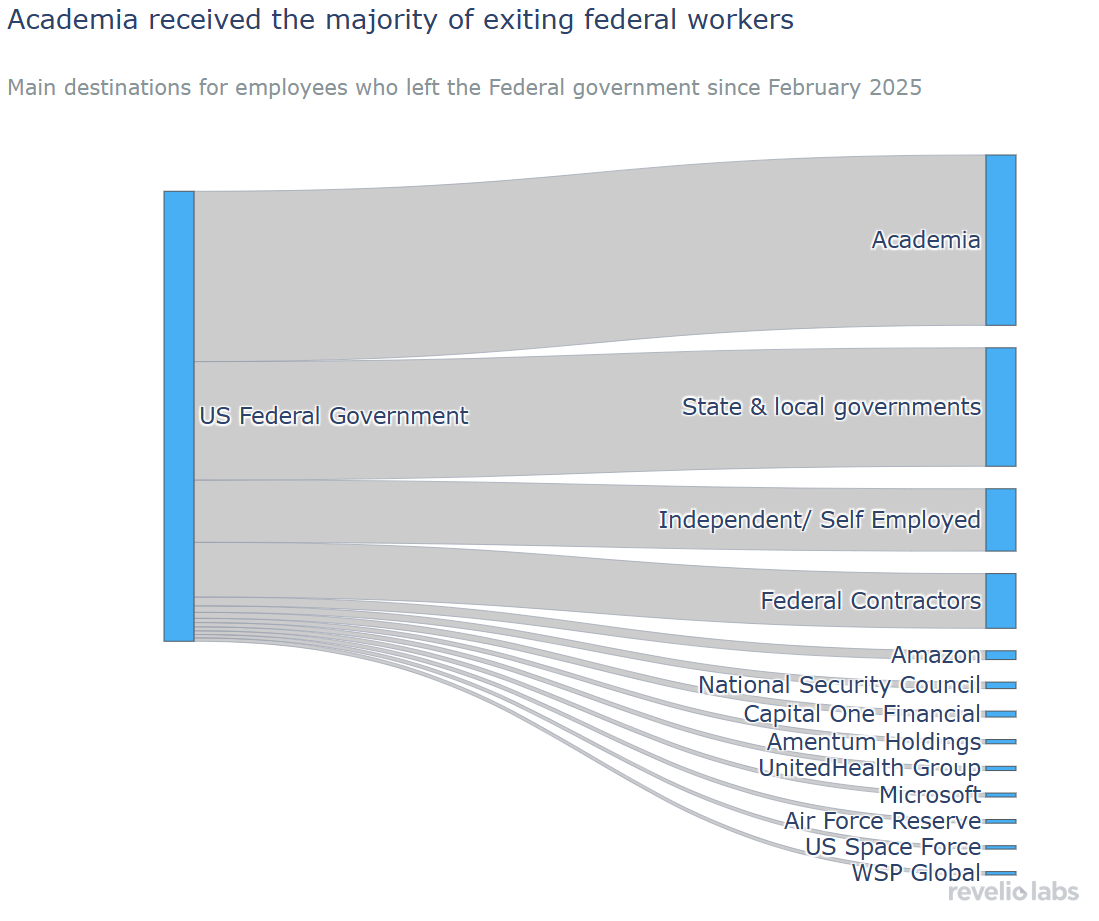
Recent departures from the federal government have not been evenly distributed across roles. Legal and public policy professionals have exited the government at higher rates than workers in other positions. These workers are often on the front lines of regulatory changes, and thus have the least chances to thrive in their roles under the current administration.

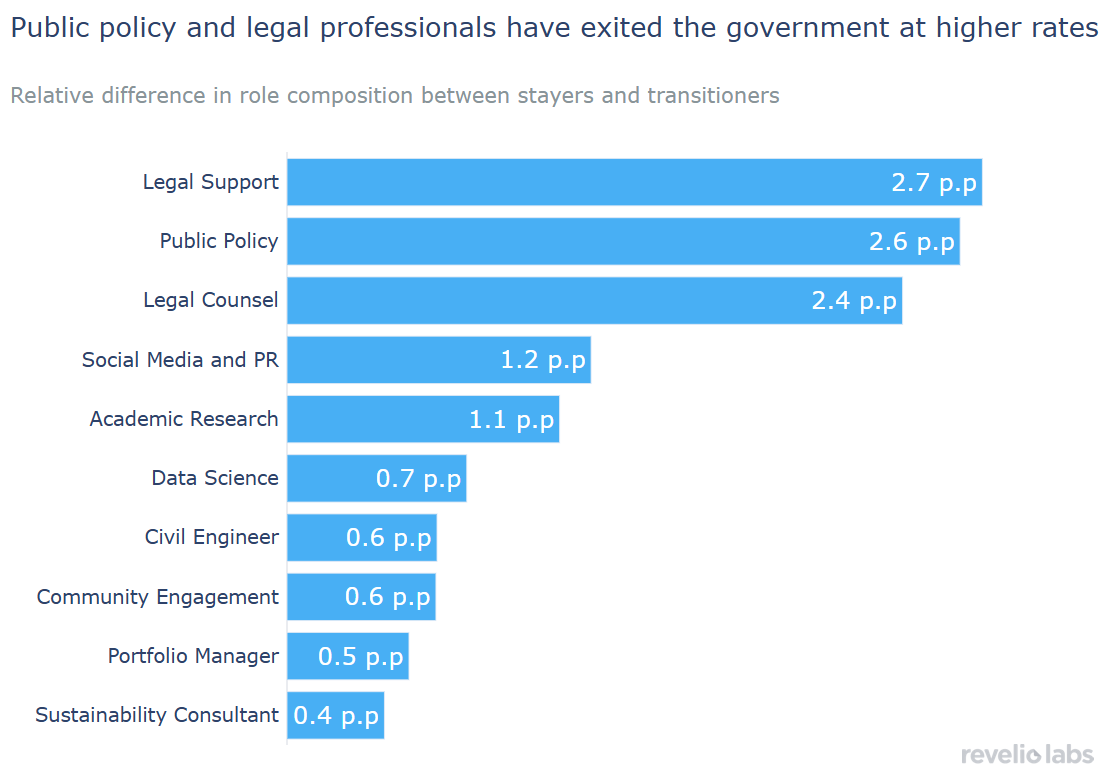
Federal workers who left government after 2025 had significantly shorter tenures than those who stayed. The median tenure for transitioners is just 3 years, half that of stayers. Revelio Labs data shows that over 57% of those who exited in the past five months had tenures of less than 2 years, compared to only 33% of stayers. Many who left were likely terminated during their first year probationary period, before becoming eligible for federal retirement benefits. To qualify for full retirement, employees generally need at least five years of civil service. Those leaving before meeting these requirements may receive only a deferred annuity or reduced benefits, which helps explain the shorter tenure among transitioners.

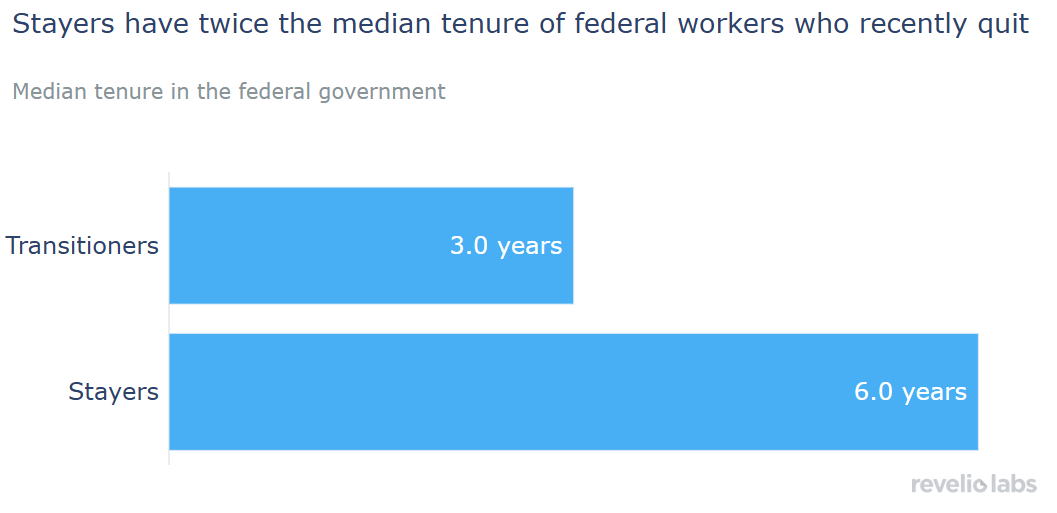
Finally, examining the average age of federal workers who exited the federal government since February 2025 versus those who stayed shows a clear age difference that mirrors the difference in tenure. Those who exited the federal government tend to be significantly younger than their counterparts, with average ages of 36.7 and 41.9 years old for transitioners and stayers, respectively. Younger employees, who are earlier in their careers, are often more flexible and are more likely to leave or be let go. In contrast, older workers with longer tenure may have stronger job security, accumulated retirement benefits, or greater incentives to stay.
Federal government jobs, once viewed as stable and rewarding career paths, have undergone profound shifts in recent months. Instability and policy shifts are reshaping not only who stays or leaves, but also the nature of federal employment. The disproportionate departure of younger, less-tenured employees, particularly in critical legal and policy roles, raises serious concerns about the government’s ability to preserve institutional knowledge. Looking ahead, the federal workforce may struggle to attract and retain the talent needed to prepare and mentor the next generation of policy leaders, which poses long-term risks to the strength and continuity of public service.

